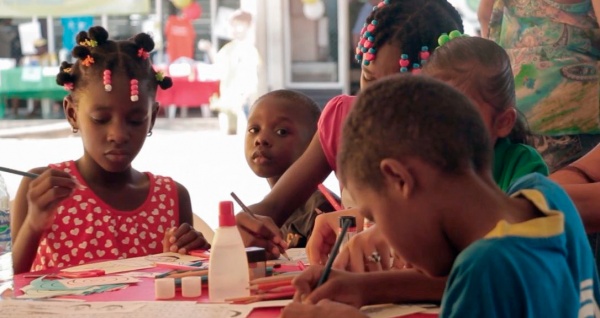Health in All Policies approach: Quick Assessment of Health Inequities
Why do the people of Saramacca have less chronic kidney disease than those of Brokopondo? What is not present there, that is present in the other district or vice versa? Why does diabetes affect the poor more than the rich? Why is it that HIV appears more often in creoles than among Amerindians? Do rich people smoke more than the poor? This type of analysis and many more were possible after the Quick Assessment of Social Determinants of Health (ERDS ) implemented by the Government of Suriname with the support of PAHO.
This Quick Assesment (ERDS) was based on the evaluation of available data in the 15 major diseases that contribute to the Productive Years of Life Lost (technical term: Disability-Adjusted Life Years or DALYs).
In the data it is found that the number of DALYs lost per year in Suriname is 168,200 and that the main social determinants related to these diseases are geographical location, socio -economic status and population group, and gender.
The final assessment reports were used to define 8 areas of action to implement the strategy of Health in All Policies. These were assessed during the National Consensus Workshop on August 2015 to draft policy options. On October, they were presented and accepted at the International Conference on Health Equity, Social Determinants, and Health in All Policies to leave everything ready to initiate the execution phase. These areas are:
- Education and employment
- Planning and land management
- Environments (housing, road infrastructure, mobility)
- Comprehensive Community Planning (integrate the community in the socio- political and administrative processes)
- Responsible consumption (tobacco, alcohol and food)
- Training for Employment
- Governance of the health system
- Organization and management of the health system
Meets the criteria established under Health in All Policies:
- Political commitment. The strategy has deep political commitment because the Government of Suriname requested and implemented the Quick Assessment of Health Inequities. Supporters include Vice President, H.E. Ashwin Adhin ; The Minister of Health, H.E. Patrick Pengel, Ministry of Health Director Dr. Maureen Wijngaarde-Van Dijk, Parliament President Dr. Jennifer Geerlings-Simons ,the Ministry of Foreign Affairs and from the other Ministries .
- Separate Structure. The strategy has its own structure. There is a meeting of permanent secretaries, resulting in 8 working groups of intersectoral policy (formulated by the National Consensus Workshop) and a directing group for the Monitoring of Health in All Policies.
- Participation of other Sectors. The government sector participates with 8 Ministries, the private sector, community, academia, and NGOs.
- Separate Budget. It has resources from PAHO / WHO, the UN and the IDB through its resource mobilization. It is a sustained and continuing effort provided by these organizations, now appropriated by Suriname with a sustainable strategy.
- Seeks to reduce inequality. The strategy aims at reducing inequality by acting on the Social Determinants of Health. The Quick Assessment of Health Inequities showed that the three main dimensions of inequality in Suriname are geographic location, socio- economic status and population group and gender. The eight working groups defined intersectoral policies following the assessment. These policies are intended to act on these determinants and consequently reduce health inequity.
- Intersectoral action. Each of the 8 groups is based completely on intersectoral work in the areas of education, labor, trade, industry, regional development, district councils, agriculture, environment, public works, housing, transportation, finance, media, sports, youth, police, gender, social matters, private sector, civil society, health and academia, etc.
- Public policy. The strategy develops policies that impact pubic health. Public policies are being developed and ready to be implemented by the work groups. The Cabinet is implementing a number of intersectoral policies of Health in All Policies.
- Evidence of results. There is scientific evidence that has helped in the decision making process. It is ongoing and there is no formal assessment of results.
- Social participation. Social participation was achieved, as this assessment was a participatory exercise with several rounds of consultation that began with experts in health data, but then progressively expanded its circle of participants to include people of all different ministries and civil society and academia. It has had a major social participation through the creation of spaces and safe, transparent and open forums for discussion and policy formulation: participatory monitoring, the Delphi method and the National Consensus Workshop.

